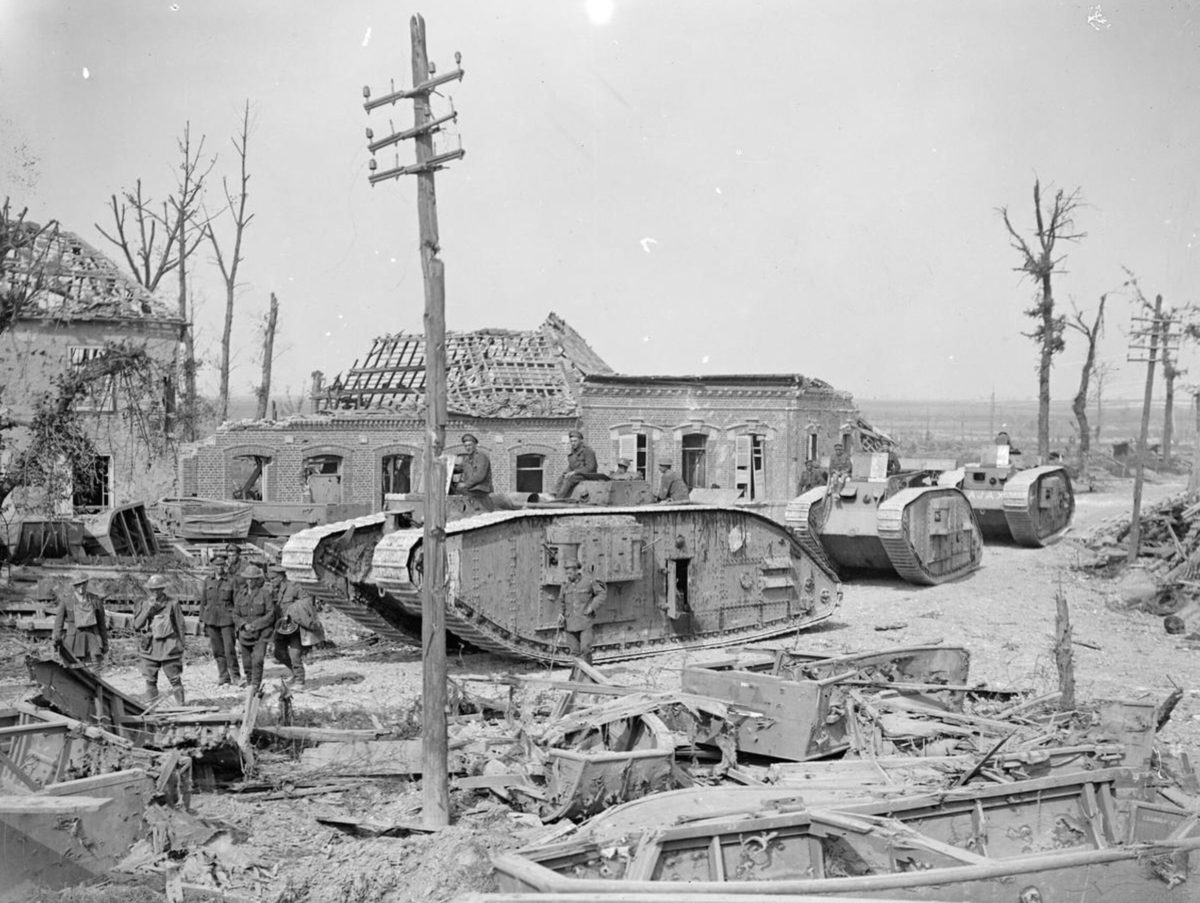The importance of the tank as a revolutionizing factor in modern warfare cannot be overestimated.
In “The Tank Corps in the Great War, Volume 1,” author Stephen Pope gives readers a highly detailed and chronological account of the inception and development of this remarkable military machine.
GET HISTORY’S GREATEST TALES—RIGHT IN YOUR INBOX
Subscribe to our HistoryNet Now! newsletter for the best of the past, delivered every Monday and Thursday.
How Tanks Came Into Being
The tank was a British invention. Behemoths on the battlefield, tanks were first used by the British in combat during the Battle of Flers-Courcelette in World War I. They became known as “tanks” because their makers tried to pass them off as water tanks to deceive the enemy. Today the British Army’s Royal Tank Regiment, previously known as the Tank Corps, has the distinction of being the oldest tank unit in the world.
Tanks owed their development to the Germans’ feverish use of machine guns — which had a devastating effect on British troops and indeed most anything within range. One Lt. Dickinson, a soldier of the 10th Lincolnshire Regiment, described machine gun bullets as raining through the air and ripping holes in everything they touched, later saying, “the air was full of bullets and the men began to fall all around us. It was tragic.”
Pope draws attention to the contributions of Maj. Gen. Ernest Dunlop Swinton, a highly experienced staff officer who, during World War I, served as Britain’s official war correspondent on the Western Front. Swinton, in addition to his great common sense, possessed a gift for out-of-the-box thinking. He later wrote of the thought process that inspired his concept for a revolutionary new vehicle — to become known as the tank.
“Since I had been at the front, all the information I had gathered … had consistently to bear out the fact that, apart from his artillery the main strength of the enemy resistance lay in his skillful combination of machine-guns and wire,” wrote Swinton in 1932. “Throughout this time, I had been racking my brains to discover an antidote, and within the last two weeks my vague idea of an armored vehicle had definitely crystallized in the form of a power-driven, bulletproof, armed engine, capable of destroying machine guns, of crossing country and trenches, of breaking through entanglements, and of climbing earthworks.”
The Tank’s “Baptism of Fire”
With exceptional attention to detail, Pope charts what he refers to as the “conception, birth and baptism of fire” of the tank. He also paints a clear picture of the men who played vital roles in shaping the tank in its infancy and leading it to success in battle, thus bringing the world’s attention to it and making it into what it is today.
Readers with interests in archival sources as well as technology will appreciate Pope’s skillful use of contemporary sources, including excerpts from letters and wartime reports, woven throughout the text, in addition to many helpful and interesting photographs in both black-and-white and color.
The first in a series of six, “The Tank Corps In the Great War, Volume 1” will be followed by additional volumes which analyze and describe the tank’s journey into and through the Battle of Cambrai as well as through the end of the war in 1918, with an additional volume devoted to reference material. This volume is highly recommended for readers with a keen interest in the early development of mobile warfare.
historynet magazines
Our 9 best-selling history titles feature in-depth storytelling and iconic imagery to engage and inform on the people, the wars, and the events that shaped America and the world.






